Toshiba Satellite P755D: Nearing the End of the Road for Llano
by Dustin Sklavos on April 11, 2012 12:00 AM ESTApplication and Futuremark Performance
Despite being AMD's fastest 35W mobile chip, the A8-3520M in the Toshiba Satellite P755D is nonetheless a good generation behind Sandy Bridge in CPU performance. Worse, Toshiba is going to be crippled in these comparisons by its slow 5,400-RPM mechanical hard drive, but please try to remember that this is also a sub-$700 notebook. It's not supposed to blow anything away; it's just supposed to get the job done.
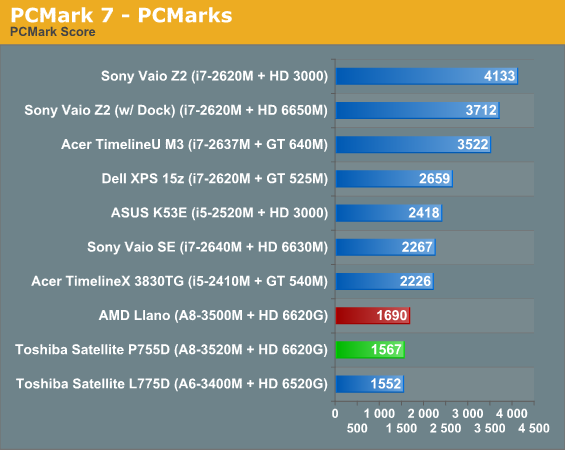
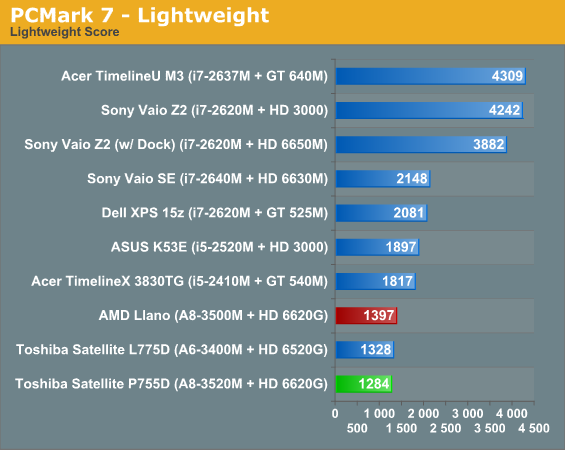
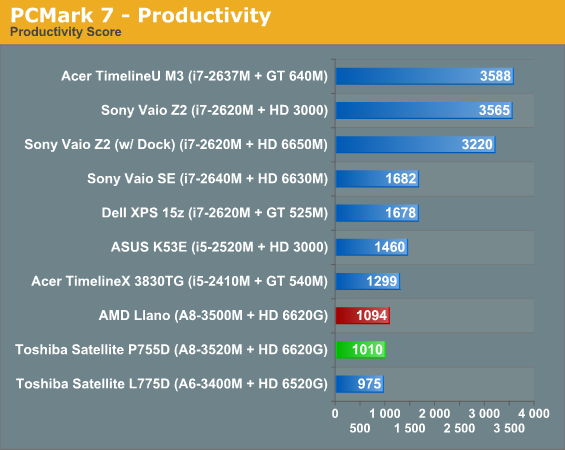
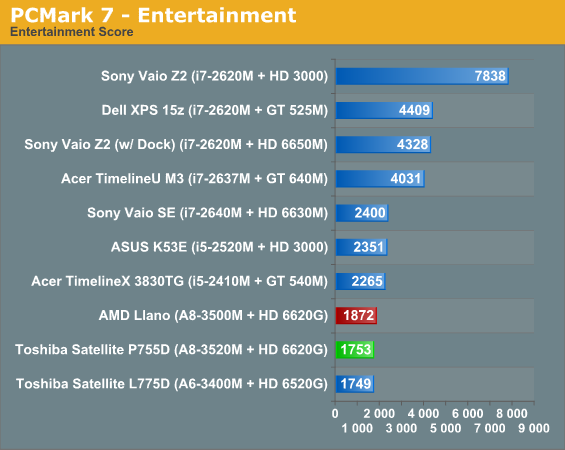
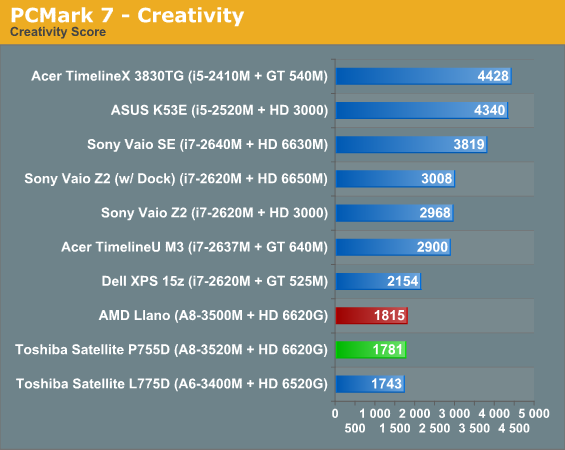


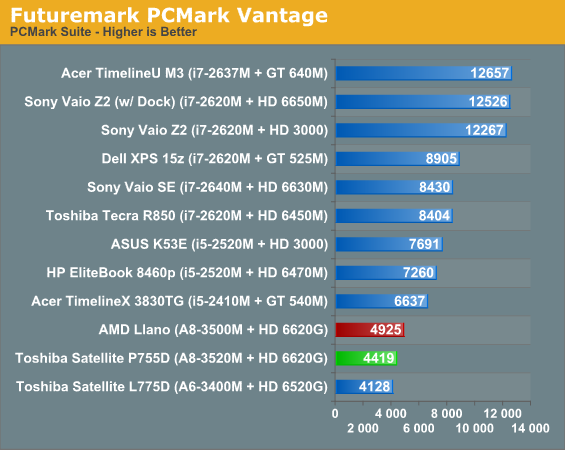
PCMark has a tendency to skew decently towards the storage subsystem, and that probably accounts for why AMD's reference Llano platform with its slightly slower CPU continues to outperform the Satellite P755D. At the same time, this is the kind of difference in scores that unfortunately will manifest itself in day to day use; the slow hard drive in the P755D will result in a computing experience that's going to feel slower and less fluid.
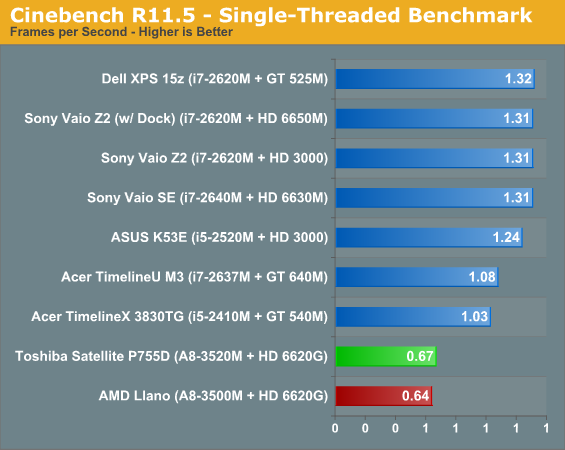
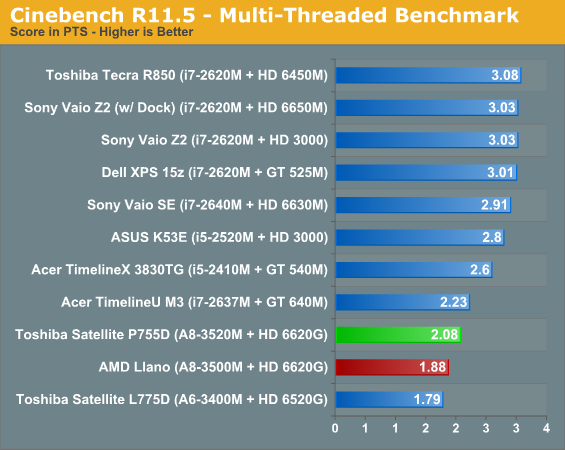
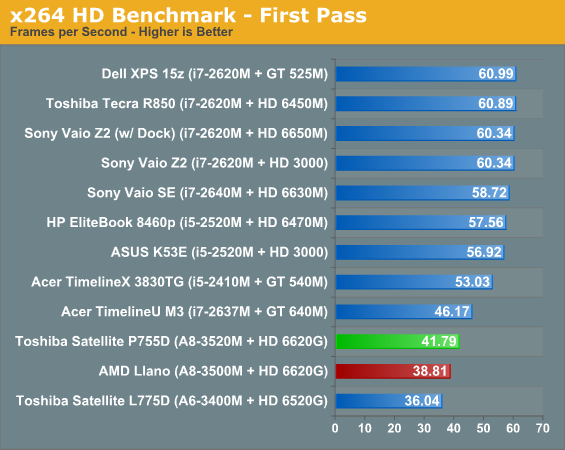
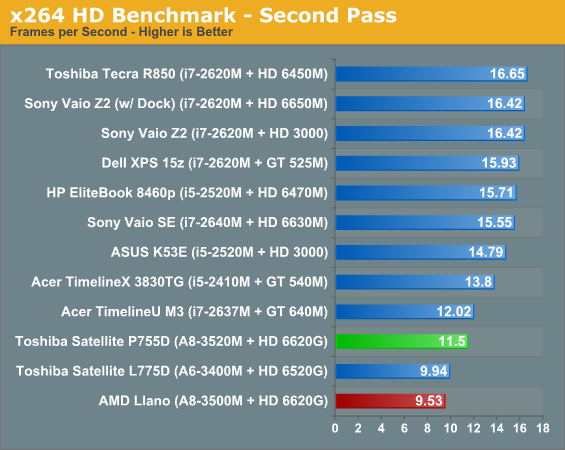
Bounce over to our CPU-isolated tests and the clock boost on the P755D manifests itself in a modest but measurable performance boost over the reference A8-3500M. Llano's poor single-threaded performance continues to dog it, though, and it's only when it's presented with multi-threaded situations that it can even nip at the heels of a 17W Sandy Bridge CPU. Trinity can't come soon enough, and hopefully it can at least reduce the performance gap on the CPU side.
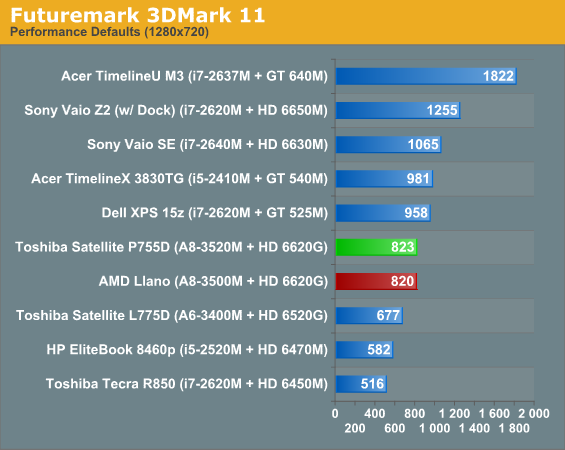
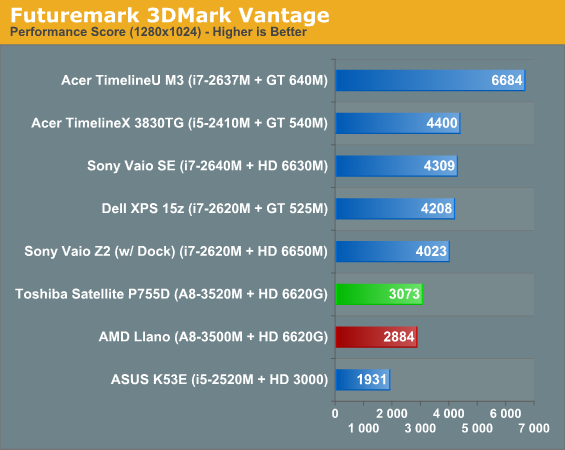
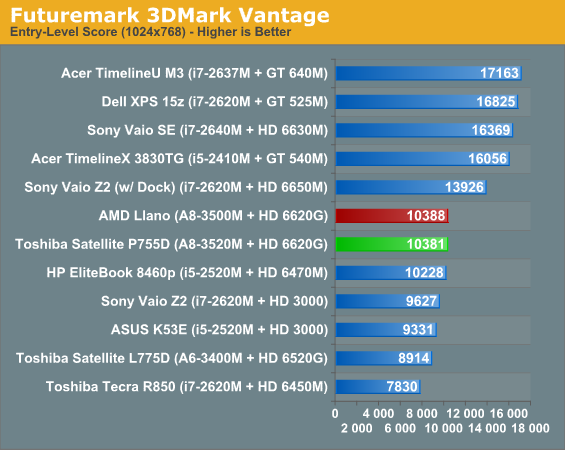

Where Llano has always been able to stretch its legs has been on the GPU half, and that's true again here. The A8-3520M's clock speed bump over the A8-3500M doesn't account for much if anything, but Llano continues to blow away Sandy Bridge's HD 3000 and even AMD's own entry-level mobile graphics. Once again, however, Trinity is needed to really make a compelling argument for AMD given the current pricing of Sandy Bridge CPU + NVIDIA GPU offerings—even Toshiba's own L755-S5173 (basically an Intel variant of the P755D with slightly different aesthetics and no Blu-ray drive) sells for the same price, and based on the components that notebook should deliver at least 15% more GPU performance with substantially better CPU performance.










34 Comments
View All Comments
JarredWalton - Thursday, April 12, 2012 - link
There's a setting in AMD's control panel called PowerPlay. Set that for Maximum Performance and you shouldn't have any downclocking (except maybe on high-end parts like the 5870, 6870, etc. and above?) Using those settings, the AMD "test Llano" laptop lasted 161 minutes doing "gaming" while on battery power. I don't think Dustin tested the Toshiba, but it would be less most likely (given the other battery life numbers are all lower)--probably around two hours, give or take. By contrast, the Sony VAIO SE with a 49Wh battery and 6630M (and better gaming performance overall) lasted 90 minutes in the same test. I'm not sure how pertinent "gaming on battery" tests are, though -- most people I know don't usually play many complex/demanding games on laptops while unplugged.kamm2 - Thursday, April 12, 2012 - link
As mentioned in the article, the case on these laptops is not very desireable. A coworker bought a P755 for his daughter and I helped set it up. My wife needed a new laptop and the price and specs were good so I was very close to buying one. I just couldn't do it though due to the cheap feel of the case and trackpad buttons.stimudent - Friday, April 13, 2012 - link
I have an A8-3550MX for about a month now. It can comfortably run four computational chemistry projects while playing a Blu-ray. It has been a pleasure to use too for everything else in between.The only problem may come when the computational projects tap into the GPUs causing a slight hesitation in the Blu-ray playback.
Etern205 - Saturday, April 21, 2012 - link
I currently still have my Toshiba, but I got their business line up the Tecra. It's was the very first Intel dual core @ 1.8GHz, 512MB DDR2, 80GB SATA HDD, and Intel IGP. I later on upgrade my HDD to 160GB and installed Vista Home Premium 32bit upgrade it to 2GB and Vista runs great. No lags or slow responses where other notebooks may require more ram just to work properly.I like Toshiba, but their configurations sucks big time. Let's say you want a system with a decent GPU, then must get their 17" models. I want a 13" or so with a decent GPU, but I see none of in their line up. Even their GPU in their 17" model aren't that great compare to others.